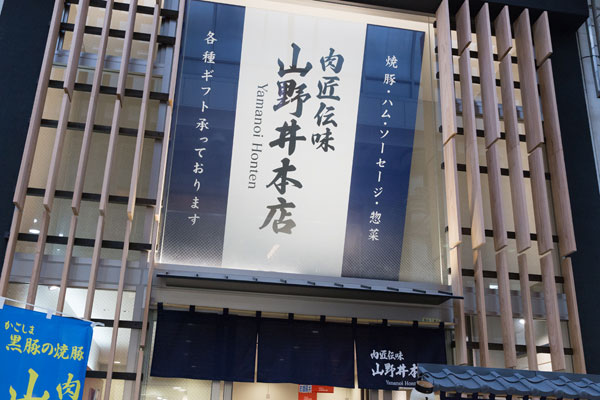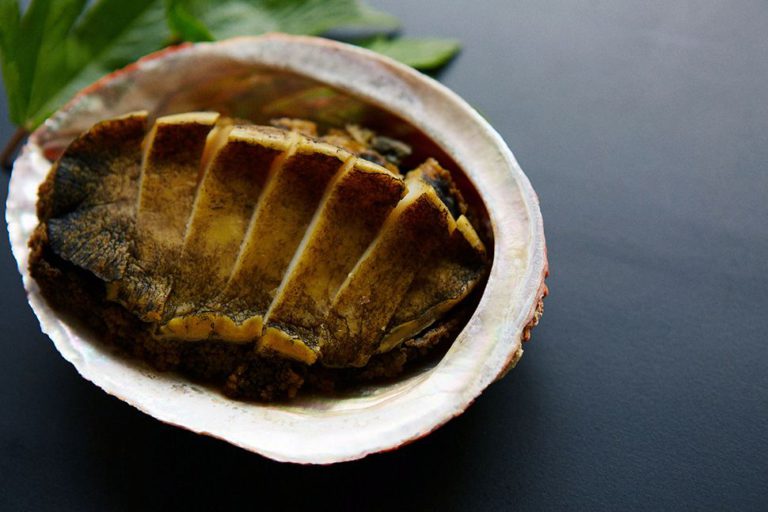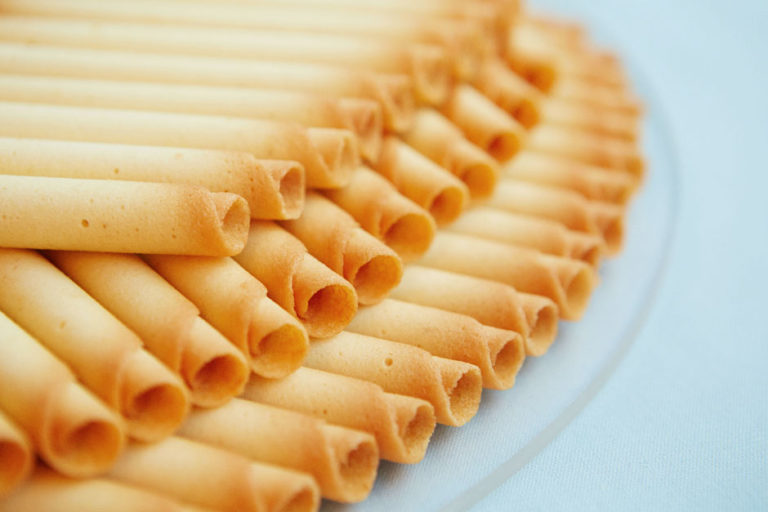Bringing you the unparalleled flavor and aroma of grilled pork
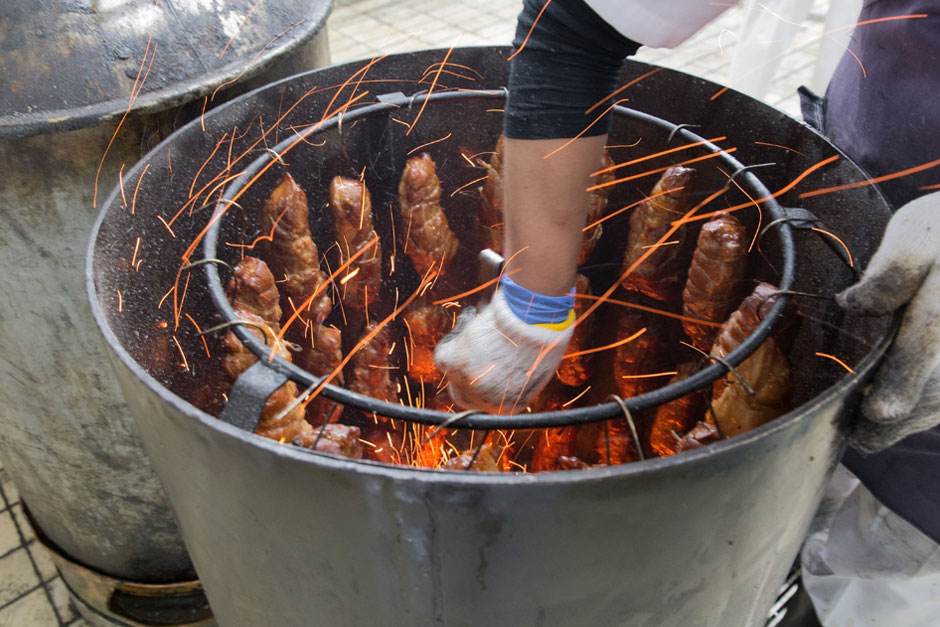
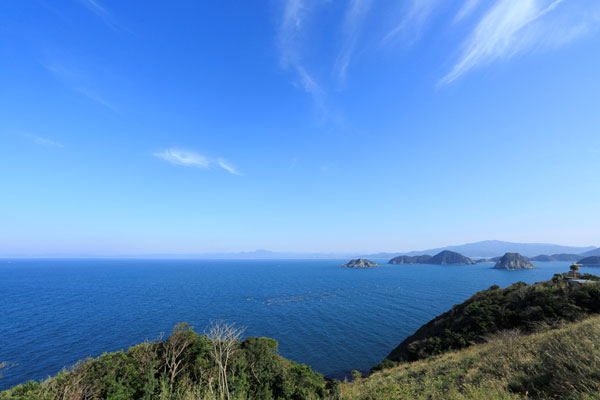
The city of Minami-Satsuma is situated on the western edge of the Satsuma peninsula looking out over the East China Sea. Minami-Satsuma boasts some very precious natural assets. It is home to Fukiagehama, one of the three largest sand dunes in Japan, a glorious arc stretching over a distance of about 30 km. The beach at Minami-Satsuma is an important spawning ground for the loggerhead turtle, while the area around the Manose river mouth is a migration ground for the black-faced spoonbill, an extremely rare wild bird.
This region has been surrounded by active volcanoes since ancient times and consequently has a high proportion of volcanic soils called shirasu-daichi. These soils are not suitable for rice cultivation, but they are however ideal for growing sweet potatoes, introduced to Japan from China via the kingdom of Ryukyu (present-day Okinawa). Sweet potato is excellent as pig food, and in this way pork has become a central part of the traditional diet unique to Minami-Satsuma.

It was 1980 when Yamanoi founder Susumu Yamanoi first hit upon the idea of capitalizing on the unique climate and local pork industry in Kagoshima to produce products that would resonate nationwide. Since then, the business has been taken over by his son Shinji Yamanoi, who has spent time studying in Germany. Today, Yamanoi supplies a wide range of quality pork products such as hams and sausages. It all began with the original defining product, charcoal-grilled pork, which remains popular to this day. To find out more about how charcoal-grilled pork is made, we pay a visit to the main Yamanoi factory in Minami-Satsuma.
Custom-made soy sauce enhances the flavor
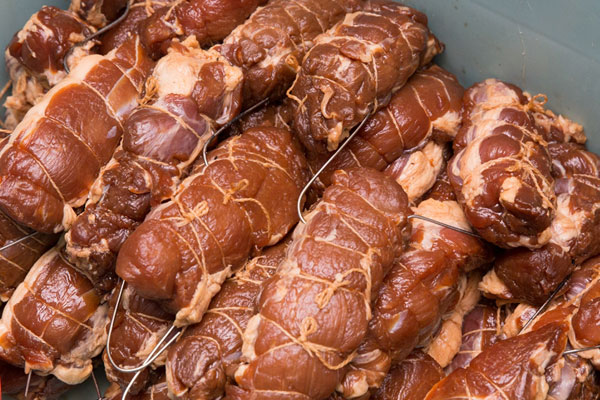
The factory has recently been granted ISO 22000 accreditation for food safety management, so we are expecting a modern facility featuring the latest automated production systems. It comes as something of a surprise, then, to discover that nearly every stage of the production process is performed by hand.First, the skilled workers carefully cut out the sinews and trim excess fat from the meat and cut it into pieces of similar size and shape.
Next, they tie each piece up with string before marinating the pieces in soy sauce.
The string ensures that the soy sauce permeates right through to the center of the meat.
The marinade uses a special type of soy sauce made by Yamae, an established brewer founded in the city of Miyakonojo in nearby Miyazaki prefecture some 140 years ago. The special soy sauce was developed by the president of Yamanoi together with Yamae product development manager Mr. Yoshida.
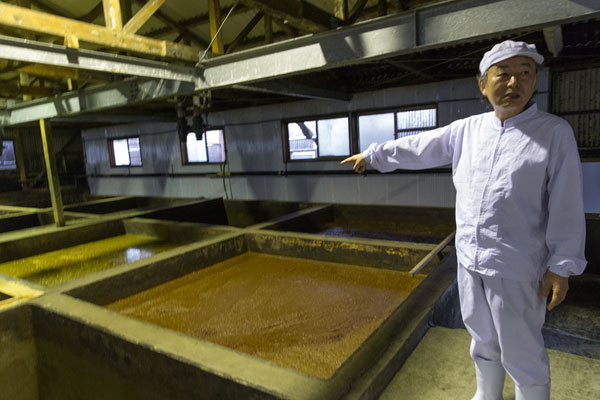
The current president of Yamanoi was keen to build upon the work of previous generations by further refining and enhancing the flavor of Yamanoi products. He identified the Yamae soy sauce as being the best one for the Yamanoi marinade.
But there was a problem: switching to a different brand of soy sauce would inevitably alter the long-established flavor of the marinade. They were confident that the new formulation would taste good, but they weren’t sure if the market would respond well to change. But the Yamanoi president was determined to refresh the product, and Yoshida was keen to help, so together the two of them set about the task of developing a new type of soy sauce. They tried a number of different formulations until they finally settled upon the one that they thought would work.
The Yamae factory at Miyakonojo is in an ideal location for soy sauce brewing, fed by the plentiful underground waters of nearby Mt. Kirishima. Yamae takes nearly a year to produce the finished product?twice as long as the standard production process?and uses 50% more soybeans and wheat. Yamae insists on using Japanese soybeans, including locally grown ones from Miyazaki prefecture, as well as Japanese wheat.
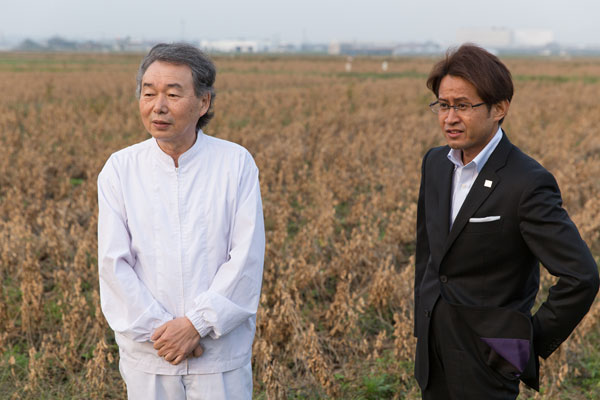
“Conventional soy sauce is made from defatted soybeans,” explains Yoshida. “These are soybeans with the oil removed. Whereas whole soybeans, especially the rarer domestic variety, tend to have higher carbohydrate and fat content, and the resulting soy sauce is smoother with an extremely complex and nuanced flavor. It’s one thing to develop a soy sauce that looks good on paper, but you have to be able to harness its complex characteristics properly. To my mind, the Yamanoi grilling process really harnesses the full potential of this excellent soy sauce.”
The Yamanoi president was won over by the newly developed soy sauce. “Once I tried this blend I just couldn’t imagine using anything else,” he enthuses. “Even the way the aroma builds after cooking is different. It’s such a great soy sauce. If you pop it in the vacuum pack right after cooking, the flavor gets right through to the core. Consumers have embraced the flavor change, and it’s now well established as the Yamanoi taste.”
Off-shore winds from the East China Sea are an important part of the grilling process
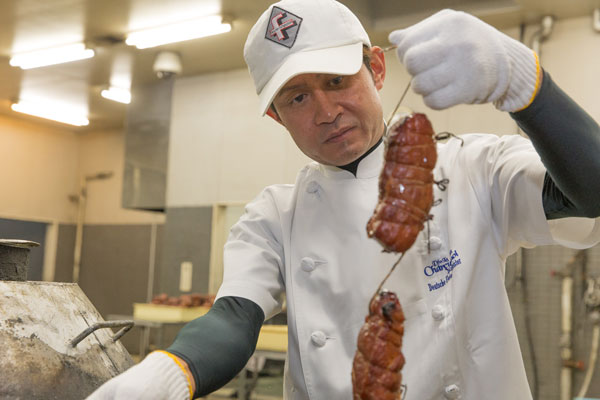
Next we move to the charcoal grill chamber, the epic finale in the production process. The door opens and we are met with a blast of heat from the cylindrical charcoal oven, which is being circulated through the chamber by a number of large ventilator fans. The other thing we notice immediately is the wonderful fragrance of grilled meat.
The unusually-shaped charcoal oven was designed by a previous Yamanoi president specifically for the purpose of grilling pork. Although relatively small, holding only around 30 pieces at a time, it is seen as the optimum design for grilling over charcoal. Yamanoi uses a combination of two types of charcoal: oak and mixed blend. The charcoal is placed in the bottom of the oven and maintained at a temperature of 250?260°C via thermal conduction. The pork pieces are suspended over the charcoal and turned occasionally to achieve a uniform finish. It is important to get the grilling time correct?neither too short nor too long. The exacting task of monitoring the meat and removing it from the oven at just the right time requires considerable experience as well as intuition.
And there is another unseen assistant behind the scenes: the strong off-shore winds from the East China Sea, which help to fan the charcoal and circulate the heat around the grilling chamber. The presence of the winds arriving from nearby Fukiagehama is one of the reasons why Yamanoi originally chose this as the location for the factory.
“Here we have everything we need: not just the high-quality produce but plentiful supplies of underground water, wind and charcoal. There’s nowhere else where you could get all these in the one place and recreate that unique flavor,” says the president.
Yamanoi uses several types of charcoal including black coal from nearby Mt. Choya. The trees in this area do not grow very tall in the harsh environment created by the strong winds from the East China Sea. The trees are thicker, sturdier and more resilient, in turn producing coal that has excellent thermal power and longevity and burns virtually in silence, generating a continuous and stable heat. The SHUN GATE team decides to speak directly with the workers at Mt. Choya.
Only the best charcoal can produce the wonderful aroma
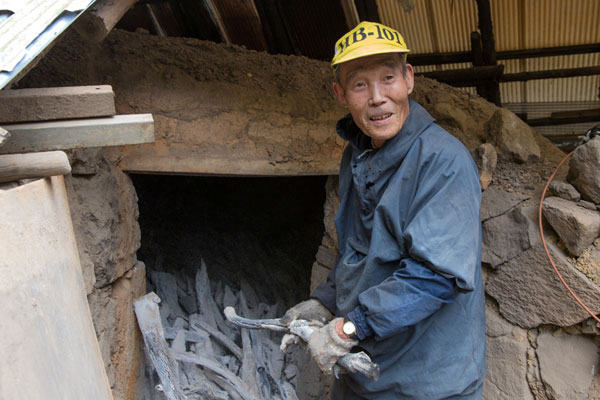
In a charcoal burner’s lodge halfway up Mt. Choya we meet Mr. Yamazaki, a charcoal worker who is patiently waiting for the right time to open the kiln.
Yamazaki packs the kiln full of mainly oak firewood, then lets it burn slowly over a period of about four days until the wood has fully carbonized and shrunk to about a third of its original size. Yamazaki has been doing this job for 50 years, and he knows how to judge the contents of the kiln just by observing the color of the smoke rising from the chimney. His special trick is an ability to burn through to the core to get the maximum concentration of charcoal.
The nearby forests used to have plenty of oak trees. But the oak has also been in demand as kindling used to make katsuobushi (dried bonito). This is leading to shortages of oak trees aged around 30 years, which are best suited to making charcoal. Meanwhile, the number of professional charcoal burners has been steadily declining. In fact, Yamazaki is the only one left in Minami-Satsuma.
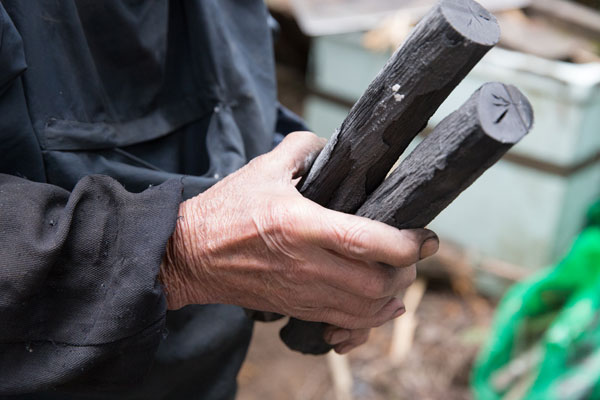
“Cooking over charcoal really brings out the flavor of the meat and the aroma of the soy sauce,” says the president. “Charcoal is central to our business. We are doing everything we can to maintain local sources of charcoal so as to keep the flavor authentic.”
Yamanoi has always been dedicated to maintaining the highest standards of taste and quality. The popularity of Yamanoi products is testimony to this dedication. The president is effusive about the company’s ongoing commitment to maintaining the quality and taste that is borne of this very special environment.
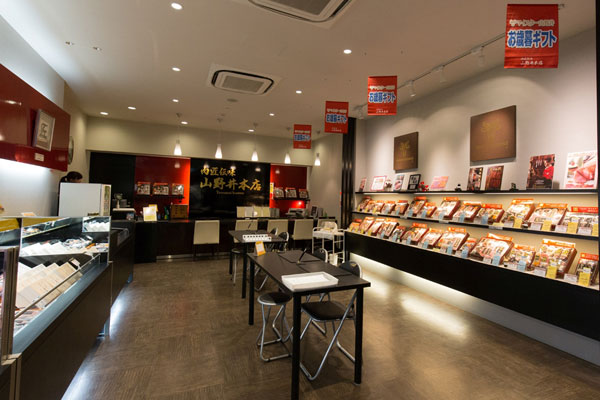
Yamanoi has always been dedicated to maintaining the highest standards of taste and quality. The popularity of Yamanoi products is testimony to this dedication. The president is effusive about the company’s ongoing commitment to maintaining the quality and taste that is borne of this very special environment.
Why not sample some of the delicious products on offer from Yamanoi.

